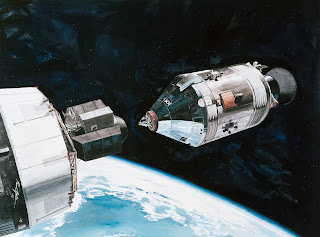Can Raspberry Pi Save Civilization?
In this post I introduced the Raspberry Pi, a single-board computer designed in the UK to provide a way for kids to learn computers without spending a lot of money. The board costs $35 and the software is free. You'll have to dig out a USB keyboard and mouse, provide a power supply from a cell phone, a 4GB memory chip, and enclosure. So, you'll feel like you are being nickle-and-dimed to death.
Will Raspberry Pi Destroy Civilization?
My experience with the Raspberry Pi wasn't all beer and skittles. It will serve a useful purpose as a media computer/television set-top-box if you can get it to run XBMC. But I failed to get it to run despite several attempts. Part of this was climbing the learning curve of XBMC. And when you compare the performance of the Apple TV that Just Works, the rationale for the Raspberry Pi as a media computer is diminished.
Thinking Inside the Box
Since the Raspberry Pi does not come with an enclosure, I figured I needed one. I did some googling and stole a design for repurposing an audio cassette tape case and make it into a Raspberry Pi enclosure. It works surprisingly well.
Raspberry Pi as Torture
My experiments with the Raspberry Pi disclosed that you need to be careful to check compatibility. Don't just assume you can plug random components into your Raspberry Pi and expect them to work. Instead, you should check whether they have been verified to work with your Raspberry Pi when you encounter difficulties.
Tasty Raspberry Pi
Happily, I bought a second Raspberry Pi that has twice the on-board memory in hopes it would work better. Then I repeated the earlier, failed experiments with much better results. I devised more powerful troubleshooting techniques and better approaches. This made my Raspberry Pi start acting as a useful media computer.
Raspberry Pi Safe
With the second Raspberry Pi working well, I sought a second enclosure. Yes, I could make another enclosure from the audio cassette case, but my wife gave me a raspberry-colored wooden box of the appropriate size to serve as an enclosure that I named a Pi Safe.
Hot Raspberry Pi
In the Raspberry Pi Safe enclosure, I worried that the Raspberry Pi might run hot. I cut slots in it to accommodate cables, and dissipate heat. And I discovered the Raspberry Pi temperatures go UP when I ask it to tell me its temperature.
The Magic Raspberry
While using the Raspberry Pi as a media computer, I discovered something magical called HDMI-CEC. And that discovery has enabled me to simplify the hardware requirements of the Raspberry Pi when it is used as a media computer.
In summary
The Raspberry Pi is a great educational tool. If you think, "Oh, I want an open source replacement for my Apple TV," stop. Repeat after me: the Raspberry Pi is a great educational tool.
 When you unbox something
and expect it to Just Work, there's little educational value.
When you unbox something
and expect it to Just Work, there's little educational value.There's a lot of fuss and bother putting things together just right. There's frustration when things ought to work don't work. There's annoyance when expectations are not met and behavior is a little different. BUT every time you encounter a problem, diagnose it, and tweak a fix you are Learning Something.
Learning Something is often frustrating and time consuming. I had forgotten something important when I was in the throes of making the Raspberry Pi work.
Just because I'm not a kid any more doesn't mean I'm past education.




No comments:
Post a Comment